Kawasaki’s cleaner screamer: How the new ZX-4RR meets emissions regulations
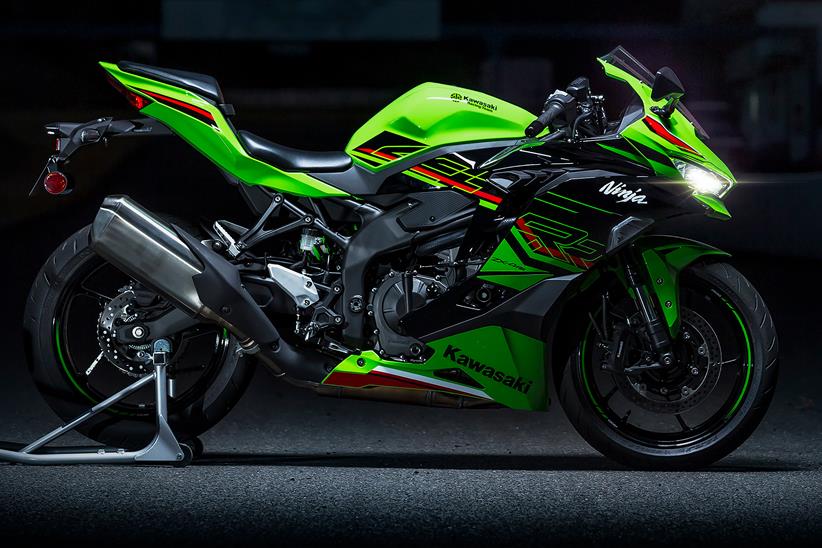
The biking world was surprised by the unveiling of the new Kawasaki ZX-4RR for the 2024 model range. Since the introduction of Euro5 emissions limits in 2020, we’ve seen an exodus of much-loved supersport bikes from the market as their makers struggle to justify the investment needed to develop and comply with regs.
High-revving four-cylinder sportsbikes have been the biggest casualties, with heroes like the Honda CBR600RR and Yamaha R6 disappeared from sale. But the new screaming 400cc inline four Kawasaki ZX-4RR is set to arrive in the UK in September, priced at £8699.
So how has Kawasaki managed to launch an emissions-compliant 16,000rpm four in the teeth of legislation that seems tailormade to target exactly such designs?
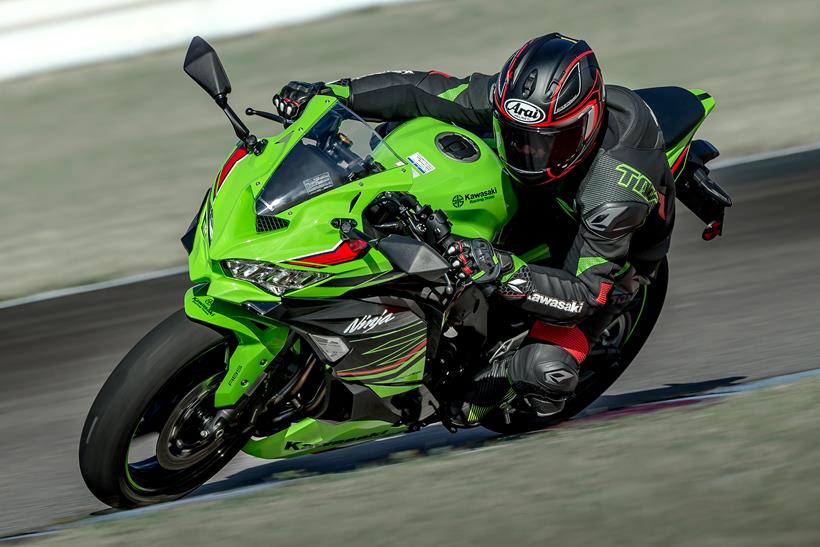
Euro5 is bad news for screamers thanks to limits on hydrocarbon emissions. They were slashed from 170mg/km under Euro4 to 100mg/km in Euro5, but there’s also a new limit of 68mg/km for ‘non-methane hydrocarbons’ (NMHC).
This was the big challenge to high-revving bikes, which need lots of valve overlap – when the inlet valves open before the exhausts have closed to maximise the fresh mixture entering the cylinder – to work at high speed.
The problem is that if you have the perfect overlap for high-rev power, it causes problems at low rpm by giving too much time for fuel to escape into the exhaust before the valves close, a major contributor to NMHC emissions.
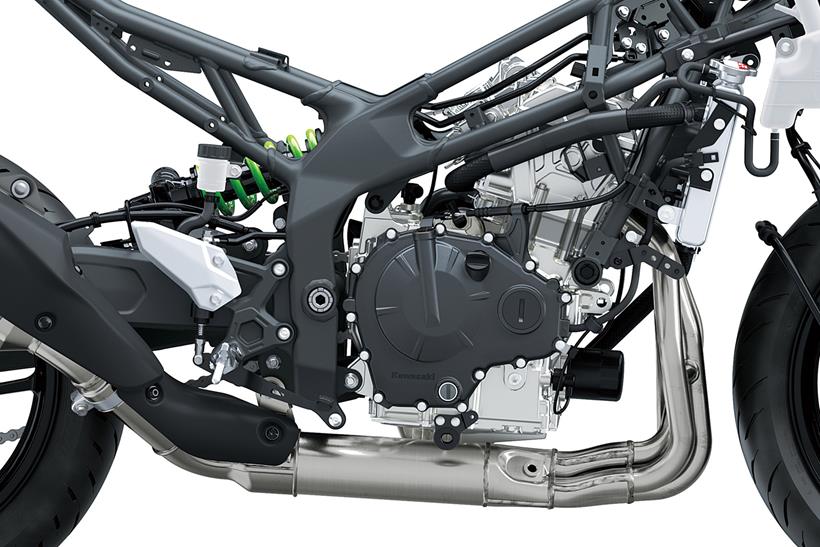
There are solutions, ranging from VVT to direct fuel injection, but they’d add too much expense to a bike like the ZX-4RR. Yet Kawasaki didn’t need to go that far – simply because our expectations for 400cc fours are 30 years out of date.
The Kawasaki ZXR400 was one of the last survivors of the 80s/90s battle for 400cc sportsbike supremacy, was last updated in 1991 and dropped in the early noughties. It made 62bhp at 13,000rpm. The new ZX-4RR manages 78.9bhp at 14,500rpm while meeting emissions limits its predecessor never faced.
That’s 19% more power, but 1000cc superbike outputs rose by about 50% over the same period, from around 145bhp to 215bhp, in the face of the same emissions rules. If 400s had developed at the same rate they’d be theoretically approaching 95bhp now.
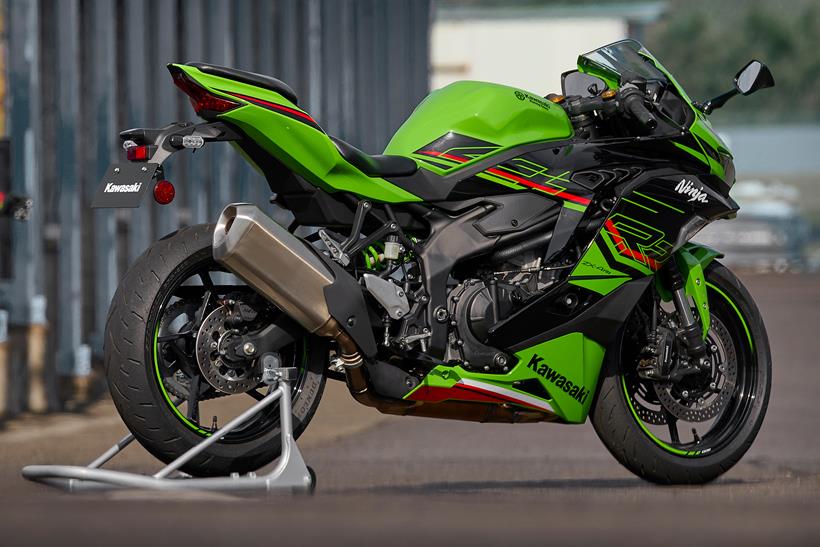
Euro5 is why that 95bhp potential isn’t reached. Despite its 16,000rpm redline, the ZX-4RR’s power peaks at 14,500, not much higher than some much larger engines (a Kawasaki ZX-10R peaks at 13,200rpm). To achieve this figure a 400cc four would need about 17,500rpm, requiring even more valve overlap and adding to the problem of achieving Euro5.
Another useful comparison is the bike’s brake mean effective pressure (BMEP), a calculation based on peak torque and capacity to see how engines of varying configurations and sizes compare in terms of efficiency. The ZX-4RR’s BMEP is 178psi, better than the old ZXR400 (166psi) but slightly below even the relatively tame Kawasaki Ninja 650 twin today (180psi).
It’s a long way short of the ZX-10R’s 210psi BMEP, which is among the very highest of any Euro5-compliant bike. The Kawasaki ZX-6R, recently reintroduced and revised to meet Euro5, manages 198psi. That doesn’t devalue the ZX-4RR’s achievement. It still manages more power than anything in its capacity class by a country mile without breaking the bank, all while breathing new life into a format that few expected to ever see in showrooms again.
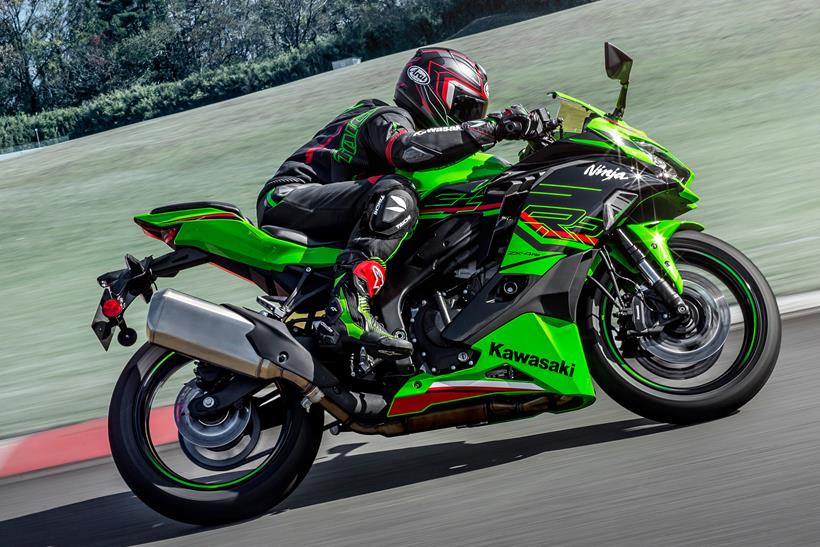
Kawasaki ZX-4RR engine tech in detail
- Entrance and exit: Getting air in and out of the combustion chamber is vital. Two-stage machining for the ports creates a straight flow path, as does a narrow valve angle that also improves combustion efficiency. Dual-length intake funnels – 40mm and 60mm – are tuned to maximise intake efficiency.
- Cooling for reliability: As well as a large, 30-row radiator, the bike uses direct airflow channelled through the fairing sides to key parts of the engine to keep it cool. Long-reach spark plugs are used to maximise their contact with the water jacket and prevent knocking.
- Forward thinking: Modern electronics are a huge step in the emissions battle and include ride-by-wire 34mm throttles and fuel injection – things that 1990s 400s could never have. The ECU is based on the supercharged Kawasaki Z H2’s, and there’s three catalysers in the exhaust help turn unburnt hydrocarbons – the bane of high-revving engines – into CO2 and water.
- Reducing the mass: Using carburised (carbon added to iron, or steel) con-rods and light, cast aluminium pistons helps the engine rev, as do triple-rate valve springs to prevent float, and friction-reducing coatings, like molybdenum on the piston skirts, that also boost durability.
- Big bore, small stroke: The ZX-4RR’s 57mm bore and 39.1mm stroke nearly matches the 57 x 39mm of the ’90s ZXR400. It’s massively oversquare, with a bore that’s 146% of the stroke. That’s more than the ZX-10R (138% ratio) and lends itself to large valves and high revs.





